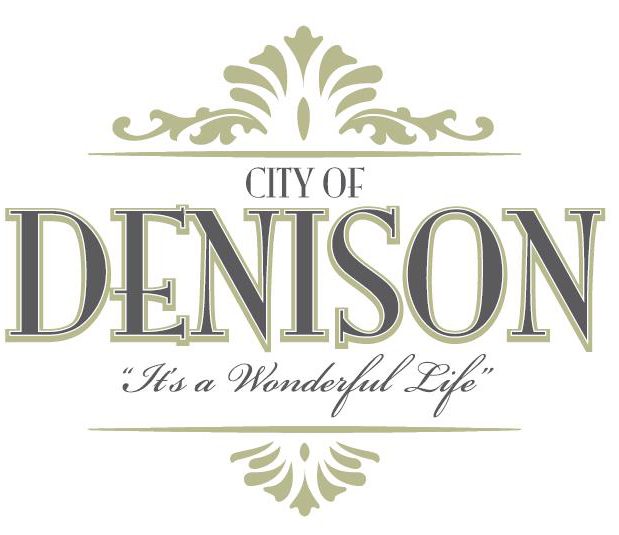Code Enforcement Department
The Code Enforcer is responsible for evaluating private properties and public grounds against local codes, answering citizen questions about the codes, and issuing citations for code violations.
The Code Enforcer works to maintain an attractive, safe community, which helps improve both property values and the quality of life of those in the community. Some code violations include unsightly lawns with long grass or weeds, trees that need to be trimmed, junk and unregistered vehicles, appliances and other junk in yards, items in the City’s right of way, excess signage, nuisance animals, and illegal parking.
If you have questions regarding ordinances pertaining to Code Enforcement, please contact the Code Enforcement department at City Hall, 712-263-3143.

Colby Ellis
Code Enforcement Official
codeenforcement@denisonia.com
Common Code Enforcement Issues
Below are some common code enforcement issues, along with the City of Denison Code of Ordinances for reference. For further code information, please use the link for “Denison’s Code of Ordinances” under “Helpful Links” to the right.
Tall Grass/Weeds and Clippings in Street
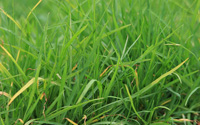
Every owner shall cut, mow and maintain all grass , weeds and brush adjacent to the curb line, including the parking area abutting the owner’s property, in such a manner so as to be in conformity with and at an even height with all other grass, weeds, or brush growing on the remainder of the owner’s property. Any property within the City of Denison, whether vacated or non-vacated, is required to be mowed any time the grass, weeds and brush reaches a height where it can become a habitat for vermin, or a health, safety or fire hazard. Ornamental grasses are excluded. Unless a variance is allowed by resolution of the Council, grass , weeds, brush or other plants, except trees, shall be cut, mowed and maintained to conform to the following height specification:
1. Developed Residential Areas: not to exceed six inches (6″).
2. Undeveloped Residential Areas: not to exceed eight inches (8″).
3. Business and Industrial Areas: not to exceed six inches (6″).
4. Agricultural Areas: not to exceed twelve inches (12″).
For more information, click the following code: Chapter 57
It is unlawful for any person to throw or deposit on any street or alley any glass, glass bottle, nails, tacks, wire, cans, trash, garbage, rubbish, litter, offal, leaves, grass or any other debris likely to be washed into the storm sewer and clog the storm sewer, or any substance likely to injure any person, animal or vehicle. (Code of Iowa, Sec. 321.369)
For more information, click the following code: Chapter 135.03
Trees and Tree Trimming
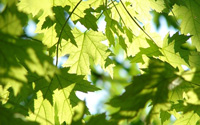
151.03 STREET TREE PLANTING STANDARDS. The following standards shall guide the planting of street trees and other landscaping materials.
1. No landscaping material may be planted which would cause a public danger or nuisance. No tree shall be planted within four feet of the sidewalk line or other impervious surface such as the curb and gutter line of the street.
2. A minimum of seven feet diameter without impervious surface must exist in the parking area, between the curb and sidewalk, to provide adequate growing conditions.
3. No street tree or shrub that will grow above 30 inches in height shall be planted on a corner lot where two streets intersect for a distance of 25 feet in any direction from the point of intersection at the curb line.
4. No street tree shall be planted within 15 lateral feet of an overhead utility line, five lateral feet from water or sanitary sewer lines, ten feet from a fire hydrant, five feet from a driveway, or 25 feet from a traffic control sign or signal.
151.07 DUTY TO TRIM TREES. The owner or agent of the abutting property shall keep all trees in the City right-of-way trimmed so that all branches overhanging a sidewalk are at least eight (8) feet above the surface of the sidewalk. If the abutting property owner fails to trim the trees, the City may serve notice on the abutting property owner requiring that such action be taken within five days. If such action is not taken within that time, the City may perform the required action and assess the costs against the abutting property for collection in the same manner as a property tax.
151.11 TREE TOPPING PROHIBITED. It is unlawful as a normal practice for any person or City department to top any street tree, park tree or other tree on public property. Topping is defined as the severe cutting back of limbs to stubs within the tree’s crown to such a degree so as to remove the normal canopy and disfigure the tree. An exception to this prohibition may be made by the Street Superintendent when a tree is severely damage by a storm or other causes, or when trees are located under utility wires or other obstructions where appropriate pruning practices are impractical.
For more information, click the following code: Chapter 151.
Noxious Weeds

Noxious Weeds in Iowa: Primary noxious weeds are quackgrass (Agropyron repens), perennial sowthistle (Sonchus arvensis), Canada thistle (Cirsium arvense), bull thistle (Cirsium lanceolatum), field bindweed (Convolvulus arvensis), horsenettle (Solanum carolinense), leafy spurge (Euphorbia esula), perennial pepper-grass, hoary cress (Lepidium draba), Russian knapweed (Centaurea repens), buckthorn (not to include Rhamnus frangula), musk thistle (Carduus nutans), and tall thistle (Cirsium altissimum). Secondary noxious weeds are velvetleaf (Abutilon theophrasti), cocklebur (Xanthium commune), wild mustard (Brassica arvensis), wild carrot (Daucus carota), sheep sorrel, red sorrel (Rumex acetosella), sour dock , curly dock (Rumex crispus), smooth dock (Rumex altissimus), poison hemlock (Conium maculatum), multiflora rose (Rosa multiflora), wild sunflower (Helianthus annus L.), puncturevine (Tribulus terrestris), teasel (Dipsacus spp.), shattercane (Sorghum bicolor), and buckhorn plantain (Plantago lanceolata). List courtesy of Iowa State University: https://www.seedlab.iastate.edu/iowa-primary-and-secondary-noxious-weed-list
Junk and Junk Vehicles
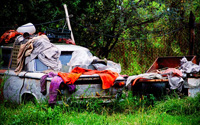
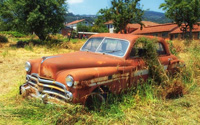
It is unlawful for any person to store, accumulate, or allow to remain on any private property within the corporate limits of the City any junk or junk vehicle. Any junk or junk vehicle located upon private property (except in garage or other enclosed structure or in an auto salvage yard or junk yard lawfully operated) constitutes a threat to the health and safety of the citizens and is a nuisance. If any junk or junk vehicle is kept upon private property in violation hereof, the owner of or person occupying the property upon which it is located shall be prima facie liable for said violation.
“Junk” means all old or scrap copper, brass, lead, or any other non-ferrous metal; old or discarded rope, rags, batteries, paper, trash, rubber, debris, waste or used lumber, or salvaged wood; dismantled vehicles, machinery and appliances or parts of such vehicles, machinery or appliances; iron, steel or other old or scrap ferrous materials; old or discarded glass, tinware, plastic or old or discarded household goods or hardware. Neatly stacked firewood located on a side yard or a rear yard is not considered junk.
“Junk vehicle” means any vehicle, whether licensed or not, on any property other than a junk yard if the vehicle constitutes a danger to human health or safety by reason of any defective condition, including but not limited to:
A. Broken Glass. Any vehicle with a broken or cracked windshield, window, headlight or tail light, or any other cracked or broken glass which could cause injury to any child who is attracted to the vehicle.
B. Broken, Loose, or Missing Part. Any vehicle with a broken, loose, missing, or damaged part which could cause injury to any child who is attracted to the vehicle.
C. Habitat for Nuisance Animals or Insects. Any vehicle which has become the habitat for rats, mice, or snakes, or any other vermin or insects.
D. Inoperable. Any motor vehicle which lacks an engine or two or more wheels or other structural parts, rendering said motor vehicle totally inoperable, or which cannot be moved under its own power or has not been used as an operating vehicle for a period of thirty (30) days or more.
E. Defective or Obsolete Condition. Any other vehicle which, because of its defective or obsolete condition, in any other way constitutes a threat to the public health and safety.
For more information, click the following code: Chapter 51.
Tires
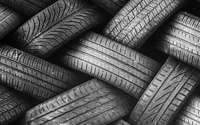
No person shall place a tire that is no longer suitable for its originally intended purpose due to wear, damage, or defect in mixed municipal solid waste, discard or otherwise dispose of such tire except to a waste tire collection site authorized under the laws of the State of Iowa.
For more information, click the following code: Chapter 105.09.
Overtime Parking (over 48 hours)

No person shall park a vehicle upon public property for more than 48 hours, unless otherwise limited under the provisions of this chapter.
For more information, click the following code: Chapter 68.05.
Chickens and Livestock

It is unlawful for a person to keep livestock within the City except in areas zoned for agriculture.
For more information, click the following code: Chapter 55.08.
Other Nuisances

Whatever is injurious to health, indecent, or unreasonably offensive to the senses, or an obstruction to the free use of property so as essentially to interfere unreasonably with the comfortable enjoyment of life or property is a nuisance.
The following subsections include, but do not limit, the conditions which are deemed to be nuisances in the City:(Code of Iowa, Sec. 657.2)
1. Offensive Smells. Erecting, continuing or using any building or other place for the exercise of any trade, employment or manufacture, which, by occasioning noxious exhalations, unreasonably offensive smells, or other annoyances, becomes injurious and dangerous to the health, comfort or property of individuals or the public.
2. Filth or Noisome Substance. Causing or suffering any offal, filth, or noisome substance to be collected or to remain in any place to the prejudice of others.
3. Impeding Passage of Navigable River. Obstructing or impeding without legal authority the passage of any navigable river, harbor or collection of water.
4. Water Pollution. Corrupting or rendering unwholesome or impure the water of any river, stream or pond, or unlawfully diverting the same from its natural course or state, to the injury or prejudice of others.
5. Blocking Public and Private Ways. Obstructing or encumbering, by fences, buildings or otherwise, the public roads, private ways, streets, alleys, commons, landing places or burying grounds.
6. Billboards. Billboards, signboards and advertising signs, whether erected and constructed on public or private property, which so obstruct and impair the view of any portion or part of a public street, avenue, highway, boulevard or alley or of a railroad or street railway track as to render dangerous the use thereof.
7. Storing of Flammable Junk. Depositing or storing of flammable junk, such as old rags, rope, cordage, rubber, bones and paper, by dealers in such articles within the fire limits of the City, unless in a building of fireproof construction.
8. Air Pollution. Emission of dense smoke, noxious fumes or fly ash.
9. Weeds, Brush. Dense growth of all weeds, vines, brush, or other vegetation in the City so as to constitute a health, safety, or fire hazard.
10. Dutch Elm Disease. Trees infected with Dutch elm disease.
11. Airport Air Space. Any object or structure hereafter erected within one thousand (1,000) feet of the limits of any municipal or regularly established airport or landing place, which may endanger or obstruct aerial navigation including take-off and landing, unless such object or structure constitutes a proper use or enjoyment of the land on which the same is located.
12. Houses of Ill Fame. Houses of ill fame, kept for the purpose of prostitution and lewdness; gambling houses; places resorted to by persons participating in criminal gang activity prohibited by Chapter 723A of the Code of Iowa or places resorted to by persons using controlled substances, as defined in Section 124.101 of the Code of Iowa, in violation of law, or houses where drunkenness, quarreling, fighting or breaches of the peace are carried on or permitted to the disturbance of others.
For more information, click the following codes: Chapter 55.01 and Chapter 55.02.
